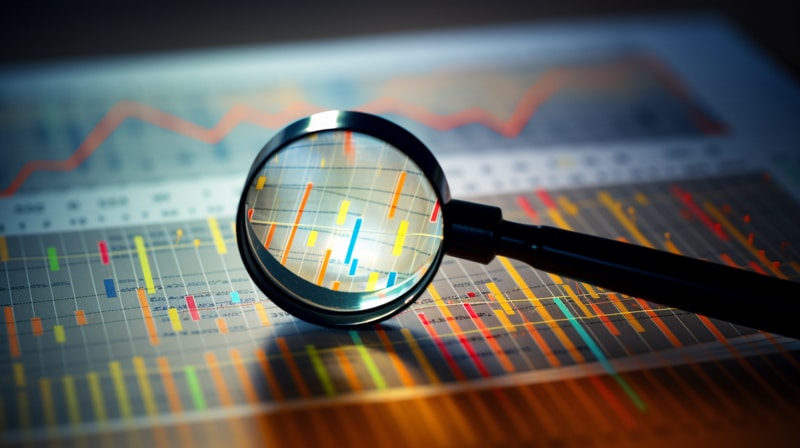MicroStrategy Interview Questions & Answers
MicroStrategy Interview questions and answers can help you in become the data champion within your own organization to propel it to greater heights.
MicroStrategy helps firms quickly turn data into usable insights, making decisions easier and staying ahead of the competition easier.
Its user-friendly interface and extensive analytical features let data analysts and business leaders analyze and interpret data more confidently.
Let’s start learning MicroStrategy Interview questions!!!

MicroStrategy Interview questions and answers:
1. What is MicroStrategy?
MicroStrategy is a popular database management system that supports various data sources.
2. Define MicroStrategy desktop?
The MicroStrategy desktop is a working area or visualization window that allows users to add multiple visualizations, each representing a key performance indicator (KPI).
3. What exactly is a key performance indicator?
KPI can be anything from reports to charts, graphs, or filters.
4. What is staging in a data warehouse?
Staging is a physical location of the data warehouse server where raw data from various servers is stored.
5. In a data warehouse, what is the purpose of ETL tools?
Data can be retrieved from many systems and stored in an offline environment known as staging with the use of ETL technologies.
6. How do users create a dashboard using the MicroStrategy desktop?
Users need to create a folder called the CELS dashboard or auto tracking dashboard, which will contain various folders such as the application, data source, document, and data.
7. In MicroStrategy Desktop, what is a filter?
A filter is a drop-down list that allows users to select specific attributes or data sets for a particular KPR or graph.
8. How MicroStrategy desktop connects databases to strategy projects?
There are data panels and buttons that can be clicked. They can extract data from Excel and CSV files. To access flat file data, you can use a URL (User Resource Library) or another web resource.
9. What is the purpose of creating an Excel report in the MicroStrategy desktop?
Creating an Excel report is to create a small report using the data extracted and the steps taken to connect the data to the strategy.
10. What are cloud files used for in data management?
Cloud files are used to store and manage data, such as Excel CSV text files.
11. What is the purpose of creating a data model in MicroStrategy?
Creating a data model involves defining the relationships between tables, converting data types, and preparing the data for analysis.
12. What exactly is a Cube in MicroStrategy?
A cube is a logical entity that stores the data in a multi-dimensional analysis cube.
13. What is the importance of understanding the architecture of the MicroStrategy platform?
Understanding the architecture of the platform allows users to effectively use the platform for their business intelligence needs.
14. What are the different types of data that can be used in MicroStrategy?
Data types can include numeric data, such as currency, float, or any other type, as well as other data types like date, countries, names, characters, names, and captions.
15. What is a Data Warehouse?
A data warehouse is a single database capable of storing a large volume of data in a single platform or high configuration machine.
16. What is the role of BIA (business impact analysis) in MicroStrategy?
BIA professionals play a key role in ensuring accurate data analysis and visualization.
17. Why does data warehouse architecture and process matter?
Understanding the architecture and workflow of data warehouses is essential for a successful implementation of BIA tools.
20. How does a data warehouse combine database and data-based applications?
ETL solutions, such as SSIS, Microsoft SQL Server Services, Talent, and Informatica, are used to extract data from various systems and store it in an offline data source termed staging.
21. What is Data Integration?
Data integration is performed by data warehouse professionals and analytics professionals as BI developers.
Here you can read it about MicroStrategy developer interview questions
22. What are the different types of analytics that can be generated targeting various groups?
Dashboards, reports, and various analysis formats are generated targeting marketing professionals, consumers, agents, or higher management.
23. What is Business Intelligence?
Business intelligence is a crucial tool for businesses to gather and analyze information to make better decisions in their organizations.

MicroStrategy Training

24. What are the tools used in business intelligence?
Tools used in business intelligence include dashboards, reports, enterprise reports, Excel reports, PDFs, and a variety of analysis formats.
25. What is OLAP?
OLAP (Online analytical processing) is a database format used for better analytics and visualizations.
26. What is the difference between OLAP and data warehouse databases?
OLAP is a dimensional database format that allows data to be entered by every device user, while data warehouse databases integrate data from different transaction servers and use ETL tools to push it to the OLAP database.
27. Explain Data Mining?
Data mining is a coding platform provided to professionals, such as consultants and agents, to retrieve search records for their business activities.
28. What is the purpose of Data Mining?
Data mining is a coding platform for mining professionals to select and query data from database systems.
29. What are Dashboards?
Dashboards are a single window with various objects, such as reports, maps, bar charts, pie charts, zoom buttons, filters, and parameters.
30. What are the key features of MicroStrategy?
MicroStrategy supports almost all data sources, including flat file databases, RDBMS, and cloud databases like Salesforce, SAP, HANA, Google, and BigQuery.

31. What are flat file databases?
Flat file databases include Excel CSV, XML text, text files, and notepad files. These data sources can be copied and pasted anywhere, and can be stored offline in pen drives or other storage locations.
32. What does MicroStrategy allow users to do?
Users can access various data sources, perform data searches, and generate reports. They can select data from a source, create reports, and summarize the data in a single statement. MicroStrategy does not enter data into databases or execute transactions.
33. What is the difference between data loading processes in MicroStrategy?
Data loading operations are classified as either live or offline data sources. Live data loading operations constantly interact with the server, whereas offline data sources retain data in memory. This leads to speedier performance and a more efficient data management system.
34. What are the different products offered by MicroStrategy?
MicroStrategy has two products: MicroStrategy desktop, mobile, and wave.
These platforms are used for development only, with the desktop offering a thorough introduction. Mobile and wave have similar functionality, but mobile may require some adjustments due to the development process.
35. What is MicroStrategy Wave?
MicroStrategy Wave is a development platform that allows users to create dashboards using three different platforms: Desktop, Mobile, and Wave.
36. What is Network Visualization?
Network visualization is a type of visualization that shows one to many relationships eg: between doctors, patients, and diseases.
37. What is an area chart?
An area chart is a type of chart that shows data with bars that have an area below them.
38. What is a heat map?
A heat map is a visualization that shows different blocks with different colours and block sizes based on the volume of data
39. How can users filter the data in MicroStrategy dashboards?
By changing the dashboard’s settings, users can filter the data and view various charts, such as area charts, line charts, and map charts.
40. What are the different data sources that MicroStrategy supports?
MicroStrategy supports data from various sources, including MongoDB, Cloud Data, Hot and Works, and Terra Data
41. What are the units in MicroStrategy Intelligence Server?
MicroStrategy Intelligence Server has various units, including MicroStrategy Reporting Services, OLAP Services, Transaction Services, and Distribution Services.
42. What are the functions of MicroStrategy Wave?
MicroStrategy Wave is a unique server that allows users to access and develop dashboards on the server.
43. Can MicroStrategy Wave be integrated with other services?
Yes, MicroStrategy Wave can be integrated within the MicroStrategy Wave Services, similar to a .net website or other APIs.
44. What is MicroStrategy’s architecture?
MicroStrategy’s architecture includes various modules, such as MicroStrategy Wave, MicroStrategy Mobile, and NarrowCast Server, which allow users to manage their data effectively.

MicroStrategy Training

Now, come join with me to learn more smarter in the form of MCQ’S
1) What is the purpose of the MicroStrategy desktop?
1. To display basic chats 1-10
2. To manage and analyze data in a variety of ways
3. To connect a database to a strategy project
4. To load data from a differential unit for data modelling
2) What is a KPI in the MicroStrategy desktop?
1. A drop-down list that allows users to select specific attributes or data sets for a particular KPR or graph
2. A folder that contains various folders such as the application, data source, document, and data
3. A database panel that can be visible or invisible
4. A report with octaves, patients, country states, or regions
3) How does a user connect a database to a strategy project in the MicroStrategy desktop?
1. By clicking on the data panel or button
2. By connecting the data for data extraction
3. By pulling data from any flat file, such as an Excel file or CSV file
4. By creating an Excel report and then moving on to the sequence of tables
4) What is the purpose of using cloud files in data management?
1. To store and manage data
2. To join tables
3. To evaluate data based on location
4. To create charts and graphs
5) What are the two sections in a table in micro strategy?
1. Attributes and matrices
2. X-axis data and y-axis data
3. Longitude and latitude
4. Country names
6) What is a data warehouse?
1. A single database capable of storing a large volume of data in a single platform or high configuration machine.
2. A tool used to analyze and visualize data.
3. A system used by business professionals to make informed decisions.
4. A database that integrates data from different systems.
7) What is the role of BIA professionals in developing BIA dashboards in MicroStrategy?
1. To ensure accurate data analysis and visualization.
2. To store vast amounts of data in a data warehouse.
3. To create reports and dashboards.
4. To integrate data from different systems.
8) What is staging in a data warehouse?
1. A physical location of the data warehouse server where raw data from various servers is stored.
2. A coding platform for mining professionals to select and query data from database systems.
3. A method that can predict future data based on past data.
4. None of the Above.
Overall, MicroStrategy is a complete and unique business analytics and data visualization solution. Its vast data capacity, solid security, and complete platform make it a great alternative for enterprises wishing to harness their data and make educated decisions.
All the Best!!!

MicroStrategy Course Price


Saniya
Author